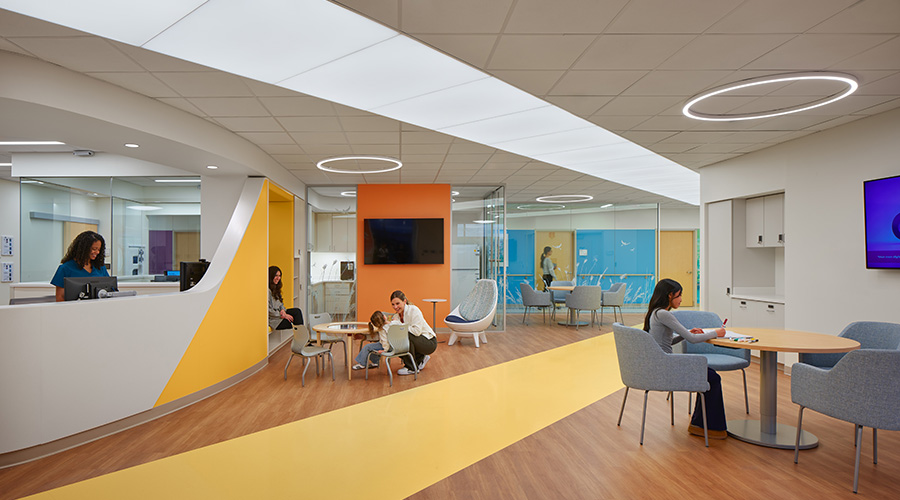Ecore, a manufacturer of safe, ergonomic, and acoustic performance surfaces for commercial and athletic markets, released updated floor impact sound test data for five surfaces that meet the new American Society for Testing and Materials (ASTM) E3133 standard. Testing was performed by Intertek, an independent International Accredited Service (IAS)-certified lab in York, Pa. The five surfaces tested include concrete, vinyl composition tile (VCT), luxury vinyl tile (LVT), Ecore Origins, and Ecore Vinyl Rx.
The test results showed that floor impact sound from generic VCT and LVT was 13 decibels (dB) higher than that of Ecore’s Vinyl Rx surfaces, a vinyl product line with vulcanized composition rubber backing. A 13dB increase in noise level is equivalent to 2.5 times louder in terms of perceived loudness.
Ecore also found that the floor impact sound levels for both Ecore Commercial’s Origins, a vulcanized composition rubber and cork surface, and the Vinyl Rx surfaces were below the floor impact sound levels for a bare concrete floor at all frequencies. Floor impact sound levels for Origins and Vinyl Rx were also below those of the generic VCT and LVT at almost every frequency. At high frequencies, VCT is as much as 24dB louder and over four times as loud as Vinyl Rx surfaces.
“In general terms, the data shows that Origins and Vinyl Rx significantly reduce the ‘click’ of footsteps that is especially prominent with high-heels and hard-soled shoes on hard floor surfaces,” said Mike Raley, Ecore’s INCE Board Certified Acoustic Engineer.
Floor impact sound is the noise produced in a room from an impact on the floor in the same room, such as rolling carts or a chair moving across a tile surface among others. Floor impact sound can be a major source of noise in a variety of spaces, such as hospitals, schools, and offices.
As an innovator in acoustic products and testing, Ecore teamed with the University of Hartford and the Paul S. Veneklasen Research Foundation in 2015 to conduct testing on floor impact sound. In 2018, ASTM introduced a new standard for measuring the floor impact sound of floor coverings (ASTM E3133). ASTM E3133 provides healthcare designers with a key acoustic metric for the healing environment. Testing to ASTM standards (like E3133) allows architects and designers to make a valid comparison of the performance of products from various manufacturers.
For more information about Ecore surfacing’s acoustic benefits and testing, go to http://www.ecorecommercial.com/Our-Promise/Acoustics .
 Contaminants Under Foot: A Closer Look at Patient Room Floors
Contaminants Under Foot: A Closer Look at Patient Room Floors Power Outages Largely Driven by Extreme Weather Events
Power Outages Largely Driven by Extreme Weather Events Nemours Children's Health Opens New Moseley Foundation Institute Hospital
Nemours Children's Health Opens New Moseley Foundation Institute Hospital Code Compliance Isn't Enough for Healthcare Resilience
Code Compliance Isn't Enough for Healthcare Resilience Ribbon Cutting Marks First Phase Completion for New Montefiore Einstein Facility
Ribbon Cutting Marks First Phase Completion for New Montefiore Einstein Facility